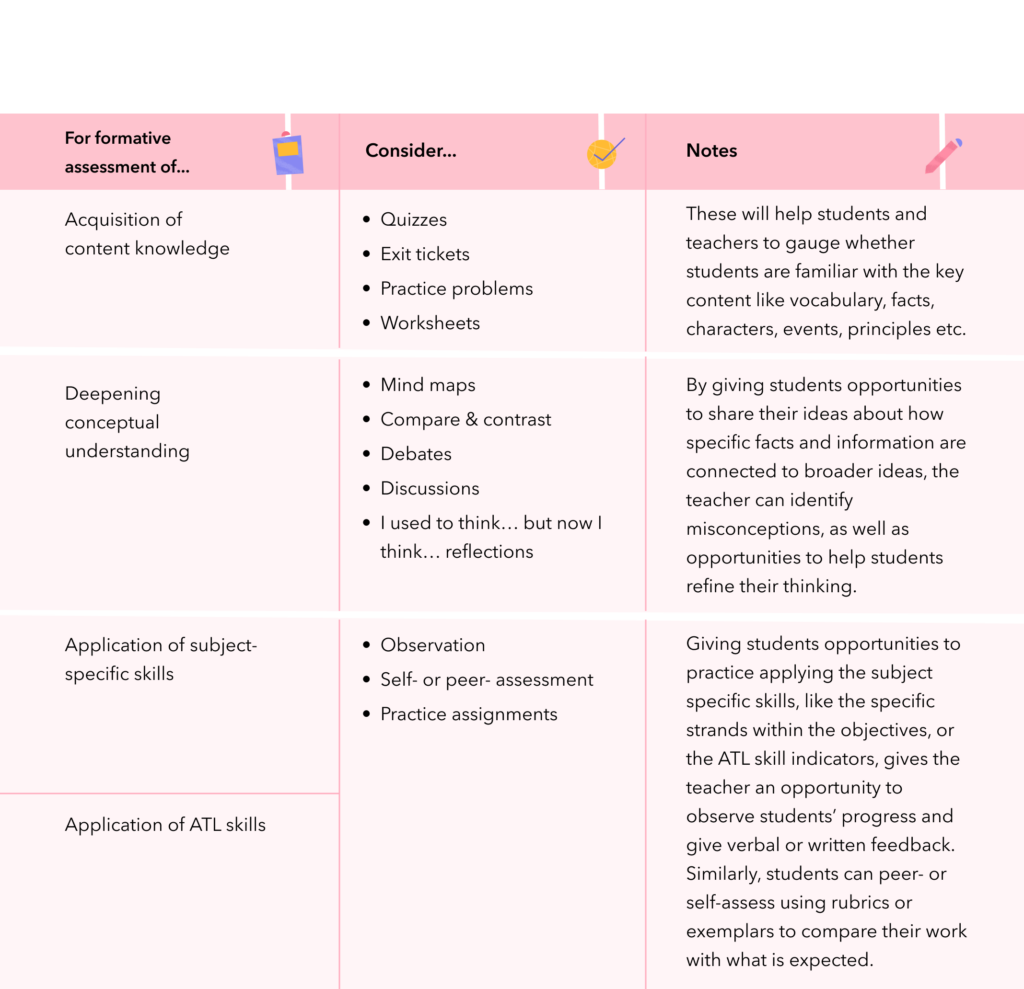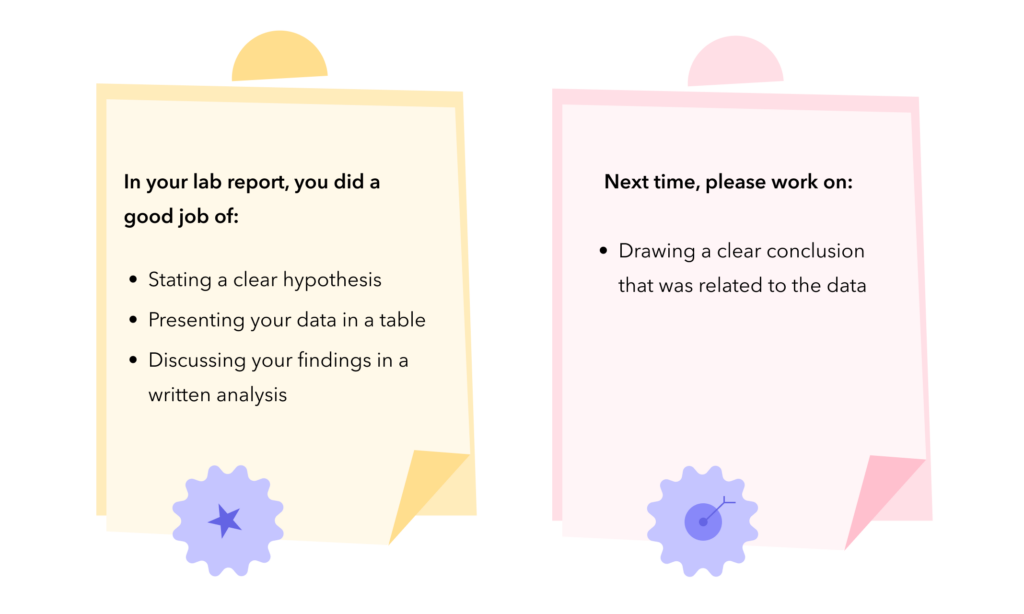MYP units are designed to help students develop content knowledge, conceptual understanding, the subject-specific skills described in the objectives and approaches to learning skills. That’s why formative assessment tasks should be designed to give students and teachers insight into how students are progressing towards each of those goals. The formative assessment strategy you select (how you assess) depends on the progress you are monitoring (what you are assessing). Here are some examples:

<Add Sarah’s video>
Giving feedback on formative assessments
Effective formative assessment results in feedback that is timely, purposeful, and meaningful.

Formative feedback is only valuable if it is applied to refine teaching and learning to help students meet the goals for the unit. Formative feedback is most valuable when both teachers and students use it. For example:
- Teachers can use verbal or written feedback to give personalized advice to students about how to improve their learning, revise their work or refine their thinking. Students can apply the feedback immediately, or collect it in a portfolio so that they can refer back to it when working on a similar task.
- Rather than correcting work for students, teachers can indicate where corrections are needed and give students the opportunity to make the corrections themselves.
- Teachers can re-teach a topic, concept or skill students are struggling with. This should be done with a different approach, rather than just repetition of the original approach, in order to deepen and refine students’ understanding.
Giving effective feedback doesn’t have to be time-consuming. Try these strategies to get the most out of the time that you invest:
- Anticipate the kinds of responses you will get from students and have a plan for using those responses in subsequent lessons. For example:
- Design multiple choice questions in which the distractors (wrong answers) indicate a specific type of error. During the next class, students who made the same type of errors can work on an activity designed to address that misconception, while other students work on something that will address the type of error that they made.
- If students self-assess or reflect to identify areas of strengths and weaknesses, give them some suggested next steps that can be incorporated into upcoming lessons.
- Automate the routine tasks and save your time and attention for tasks that require consideration and judgment.
- Multiple-choice quizzes can be assessed automatically, leaving you with more time to analyze students’ responses and revise your teaching plans to address common errors.
- Use the level-descriptors from the criteria as a comment bank from which you can copy-and-paste descriptive comments for students. This gives students detailed feedback that is aligned with the objectives of the unit without the time-consuming task of writing similar comments several times over.
- Use a digital checklist listing all the expectations students are required to meet for a particular task. When giving feedback, sort expectations based on whether the student met that expectation, or whether they need to work on it next time. See this example:





